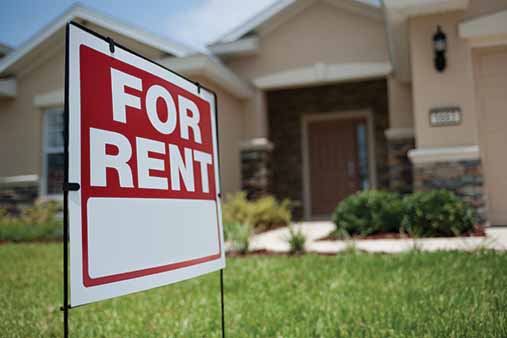How to Get a Mortgage in Maryland
Buying a new home in Maryland can feel like an overwhelming process. But, knowing the steps you’ll need to secure a home loan and the available homebuyer programs in your area will help you make the most of your move to the state
In this guide, we’ll go over the mortgage process and the different types of Maryland mortgages and down payment assistance programs available. We’ll also touch on first-time homebuyer loans in Maryland as well as what paperwork you’ll need to secure a mortgage.
Read our other guides to learn more about real estate investing and about getting a mortgage when self employed.
Make sure you are using the best lender available. We recommend Giniel Financial Group.

Maryland Mortgage Process Overview
Finding housing you can afford in Maryland can be difficult — especially for first-time homebuyers. It’s best to choose a local mortgage lender who can help you find the right loan for you and save you money throughout your home ownership. But it’s always good to show up prepared.
Read on to learn about what loans are available in Maryland and what steps you can take to better secure one.
Types of First-Time Homebuyer Loans in Maryland
For those seeking a first-time homebuyer loan in Maryland, there are several different types you could qualify for.
The types of home loans for first-time buyers in Maryland are:
- Conventional 97: This loan-to-value purchase program through Fannie Mae or Freddie Mac allows homebuyers with good credit to purchase a home with just 3% down.
- FHA loan: This loan, backed by the Federal Housing Administration, allows those with weaker credit to purchase a house with 3.5% down. However, you will have to get mortgage insurance.
- VA loan: One of the best types of mortgages around, these allow those who qualify to get a house with no money down and often don’t require mortgage insurance. To qualify, you must be a veteran, active military member, reservist, or member of the National Guard.
- USDA loan: These loans through the Department of Agriculture allow those looking to buy homes in designated rural areas for 0% down. You must have a decent credit score, but often these come with low mortgage insurance rates.
- Maryland Department of Housing and Community Development (DHCD): The DHCD’s Maryland Mortgage Program (MMP) offers assistance to first-time homebuyers with a range of ongoing programs. The MMP 1st Time Advantage and MMP Flex Loans programs, for example, can give eligible borrowers a 30-year, fixed-rate loan. For more information about these programs, visit the DHCD’s MMP page.
Should you want a deeper dive into this topic, be sure to read our Different Types of Home Loans article.
The 8 Steps to Buying a House in Maryland
Whether you’re a first-time homebuyer or are looking to purchase an additional property, knowing the steps to buying a house in Maryland will help you show up prepared. Here, we discuss the eight steps to buying a home in Maryland.
- Start Saving For a Down Payment
- Know What Mortgage Lenders Look For
- Get Your Paperwork in Order
- Apply For Mortgage Pre-Approval
- Find Your Real Estate Agent
- Find Your Home and Make an Offer
- Complete Inspections and Appraisals
- Close on Your New Home
Step 1: Start Saving for a Down Payment
A down payment is the portion of your home’s purchase price that you pay at closing. Depending on what type of loan you qualify for, your down payment might range anywhere from 3% to 20%.
Relying on how expensive the home you’re purchasing is, your down payment could be anywhere from a few thousand dollars to well over $60,000. It’s best to show up to the homebuying arena with some money already saved up.
Should you need help with saving or making a down payment in Maryland, there are some assistance programs that can help you. Some are catered toward first-time buyers, and some help low-income buyers. Each program has its own eligibility requirements, so make sure you qualify before applying.
Maryland down payment assistance programs include:
- DHCD’s 1st Time Advantage 6,000: The DHCD offers down payment assistance for those who utilize its MMP 1st Time Advantage program. Eligible applicants can receive a $6,000 loan to assist with their down payments and closing costs. This loan has a 0% interest rate and no payments due for the life of the first mortgage. The 1st Time Advantage Loans page on the DHCD’s website provides more information on the benefits of this program.
- DHCD’s 1st Time Advantage % Loans: These percentage-based loans within the 1st Time Advantage program can offer eligible borrowers a loan of 3%, 4%, or 5% of the first mortgage’s amount to assist with their down payments and closing costs. These loans all come with a 0% deferred second lien. For more information on these three programs, visit the 1st Time Advantage Loans page on the DHCD website.
- US Department of Housing and Urban Development (HUD): Maryland also has homeownership assistance programs through HUD. These include statewide programs, such as USDA Rural Development programs, to help reduce costs for low-income families. Local programs also exist, depending on the area of Maryland in which you want to purchase a home. For more information, visit the Maryland HUD Homeownership Assistance page.
Step 2: Know What Mortgage Lenders Look For
Before seeking out a lender, you should know what they will be looking for in regards to giving you a home loan. This will help you better prepare and show up with everything in order, making securing your loan even easier.
Some of the factors lenders will look at are:
- Income and job history: Lenders need to know you have a steady income that can ensure you’ll be able to pay back your loan. Often your lender will need to view at least two years worth of employment history and any other sources of income (alimony, child support, etc.).
- Credit score: Your credit score is an indication of how you manage your money. Most conventional loans require a minimum score of 620. With government-backed loans, you’ll need a score of at least 580.
- Debt-to-income (DTI) ratio: This helps lenders assess if you have the consistent cash flow to support a home loan. DTI is calculated by taking your monthly debt payments (credit cards, student loans, etc.) and dividing this by your gross monthly income. Lenders are aiming for you to have a DTI of 50% or less.
- Assets: Lenders will want to know if you have any extra money in a financial institution to ensure you can still make payments if you run into monetary trouble. Some examples of asset types are savings accounts, retirement accounts, and taxable investments.
- Property type: What kind of home you’re looking to purchase will also factor into what type of loan a lender will consider for you. Single-family homes that will be used as primary residences will take priority over investment properties that come with more risk.
Step 3: Get Your Paperwork in Order
There’s quite a bit of paperwork you’ll need to gather when applying for a loan. We’ve listed it here so you can show up prepared.
| Proof of Income | Credit Documentation | Assets and Liabilities |
| Two years of federal tax forms | Permission to view your credit report | 60 days of account statements |
| Most recent W-2s and pay stubs | Documentation of extenuating circumstances to damaged credit | Statements from retirement or investment accounts |
| 1099 forms (if self-employed) | Documents for the sale of any assets | |
| Divorce decrees or child support decisions | Verification of gift funds deposited into your account | |
| Six months of legal documentation of alimony or child support received |
Proof of Income
You must verify your income with your lender. Often, they will require at least two years of financial documentation. This way, they can ensure that your finances are stable and not at risk of encountering trouble in the near future.
Types of proof of income lenders look for:
- At least two years of tax forms — most likely just federal, but bring your state taxes too, just in case.
- Two of your most recent W-2s and pay stubs.
- If you’re self-employed, they’ll need either 1099 forms or profit and loss statements.
- Legal documentation that confirms you’ll continue to receive any alimony or child support for at least the next three years.
- If you’ve been receiving alimony, child support, or any other type of income, you’ll need to provide documentation of this income for the past six months.
Credit Documentation
As stated earlier, your credit score plays a vital role in securing you a home loan. Your lender will need your permission to view your credit report; they will ask for either verbal or written permission.
Once given access to your credit report, they will look at your credit history and scour for issues that would make it hard for you to get a good loan. These include negative factors like bankruptcy or foreclosure.
If you have damaged credit due to forces outside of your control, it’s encouraged to explain this to your lender and provide supporting documentation. In other words, if you missed payment on some credit cards due to the death of a loved one or a medical issue, bring your lender a copy of your medical bills or other expenses. This will help make a case to the lender that these demarcations to your credit were a one-off and not a pattern of bad spending behavior.
Proof of Assets and Liabilities
Your lender will also want to make sure you have additional accounts or investments should you fall on hard financial times. To better verify your assets, your lender may ask for the following documentation:
- Account statements that confirm the assets in your checking and savings accounts.
- A recent statement from your retirement or investment account.
- Documents for the sale of any assets recently sold. For example, if you sold your car, bring a copy of the title transfer.
- Proof and verification of any gift funds deposited into your account within the last two months. This can include any money from a spouse or family member to help fund purchasing a home.
To better assess your liabilities, your lender may also ask you for supplemental information on any debts you owe, such as student loans or car loans.
Step 4: Apply for Mortgage Pre-Approval
Most sellers in Maryland will require pre-approval before showing you their home. To get pre-approved for a mortgage, all you need to do is fill out an application and provide some financial details.
From there, you’ll get a peek at your mortgage pre-approval amount and can receive a pre-approval letter. A pre-approval letter lets sellers know you are financially able to make an offer on their home.
Factors that determine your pre-approval amount:
- Total Income: You want to aim for your monthly housing costs to be under 30% of your total monthly income. This lets lenders know you earn enough to make consistent mortgage payments.
- Personal Debt: We mentioned needing to calculate your DTI earlier. If you don’t already have that number, lenders will consider your credit card, student loan, and other types of debt and divide it by your total income to measure this.
- Cash Reserves: Again, this falls under the category of assets and accounts. Lenders will want to know you have enough money in the bank to cover the down payment and closing costs without going broke.
Giniel Financial Group offers complimentary pre-approval letters. All you have to do is type in your zip code to get started. Try it for free.
Step 5: Find Your Real Estate Agent
Having a real estate agent will make navigating the process of purchasing a home in Maryland a whole lot easier. Your agent will help you make offers, review contracts, and negotiate the closing process. They will also connect you to inspectors and other necessary services for purchasing a home.
The right type of real estate agent can make all the difference, which is why we recommend homebuyers in Maryland use Giniel Financial Group. Not only will Giniel provide brokerage and underwriting services, they also work directly with local realtors. This means you won’t have to search for a loan and then search for a real estate agent. You can get everything you need in one place, from start to finish.
However, should you find yourself on the hunt for a realtor outside of Giniel Financial Group, be sure to know what to look for. Things to consider include years of experience, what sort of reviews they have, the number of transactions in the past year, and if they have experience working in your price range.
Be sure to ask your agent questions about your desired neighborhoods and what their strategy is for helping you find and close on a home. Most importantly, make sure you feel comfortable with them — this process is going to most likely take a while, and you want a good working relationship.
Step 6: Find Your Home and Make an Offer
This is another area where your real estate agent will come in handy. Let them know what area you’d like to live in, and they can help you view properties and get a feel for the neighborhood.
Some useful tips to keep in mind when house hunting is to prioritize what you need to have over what you want to have. This way, your realtor can help you better find a house that fits your budget and your desired location.
Homebuying also fluctuates with the seasons. Typically, more homes are sold during the summer than during the winter. Searching during a time when more homes are on the market will give you a better range of options.
Once you find the home that’s best for you, your realtor will help you submit an offer. From here, you can begin the negotiation process with the seller. Your real estate agent will also help you navigate some of the trickier processes like seller concession, repair credits, and inspection contingencies.
Should you feel like you want to add a personal touch, you can include a letter to the seller. This will let them know that you will be a wonderful caretaker of the property and encourage them to work with you throughout this process.
Step 7: Complete Inspections and Appraisals
This part of the homebuying process allows you to better evaluate the condition of the house before officially purchasing it. After this step, you may be able to renegotiate the terms of your contract with the seller.
Inspections
An inspection is when a licensed professional comes and evaluates the home for any potential issues. In Maryland, your inspector should check the roof, foundation, electrical system, HVAC system, and plumbing of your future home. However, a septic inspection may have to be done separately.
While it’s not a requirement in Maryland, it’s recommended that buyers complete radon testing and termite inspection before purchasing a home. Investing in some of these more niche inspections can possibly save you quite a bit of money and avoid a huge headache in the future.
Appraisals
Your lender will hire an appraiser to examine the home and determine how much it’s valued at. This is to ensure the house is worth the money being loaned to you.
Should the appraisal come back lower than expected, you might have to renegotiate the price with the seller or possibly fork over a larger down payment.
Recommended: Use a local lending service like Giniel Financial to make the appraisal process easier to navigate.
Step 8: Close on Your New Home
Once you’ve finished with all inspections and appraisals, you’ll receive a Closing Disclosure. This has all the information on your loan, your monthly payment, down payment, interest rate, and closing costs. From here, your lender should approve your financing; once complete, you will be officially ready for closing.
Closing on a home in Maryland requires you to meet at the title company to finalize paperwork and settle closing costs. On the closing date, you will sign several documents. These include the mortgage note, the deed, and the disclosure statements. From here, it’s time to move on to settling the closing costs.
Closing costs are broken down into four different categories:
- Lender fees: These cover the cost of originating and underwriting your loan. Sometimes survey fees may be included.
- Title and escrow charges: These cover the cost of the title search, title insurance, and closing; and are paid to the title company.
- Prepaid costs: This can include homeowners insurance, property taxes, and any other ongoing costs of homeownership.
- Other closing costs: A catchall for other associated costs that vary from buyer to buyer. These can include pest inspection fees, real estate attorney expenses, and some of the more niche inspection costs mentioned earlier.
Once you sign on your loan, you’re officially a homeowner.
Moving Forward
Hopefully, this information has helped to better prepare you for the journey of homeownership. Whether you are a first-time homebuyer or have done this in the past, it’s always good to know what you need to show up with.
As always, the process is significantly easier with professional help along the way. We recommend searching for a local lender who can provide real estate services, inspection and appraisal services, and be available to answer any questions. To learn more, be sure to read our Best Mortgage Lenders for LLC Owners review.
Recommended Lending Services
We think the team at Giniel Financial Group is thoughtful, professional, and comes with almost everything a new homebuyer would need to easily navigate the process. Get started by using their free assessment tools, or contact them to get started securing a loan.
FAQ
Yes, the Maryland Mortgage Program (MMP) offered by the state’s Department of Housing and Community Development offers assistance for first-time homebuyers. Both the MMP 1st Time Advantage and MMP Flex Loans programs offer eligible applicants a 30-year, fixed-rate mortgage as well as down payment assistance with the Advantage program. To learn more about these programs and decide which is best for you, visit the Programs page on the DHCD website.
To apply for a home loan, you’ll need proof of income and job history, your credit score, your calculated debt-to-income ratio, and proof of additional assets. For more information, read our section on Getting Your Paperwork in Order.
There are several different types of loans. The two main types are conventional — those not backed by the government — and government-insured loans.
Conventional loans include fixed-rate and adjustable-rate mortgages. Government loans include FHA, USDA, and VA loans. To learn more about these types of loans, their qualifications, and what they offer, be sure to read our Different Types of Home Loans article.


